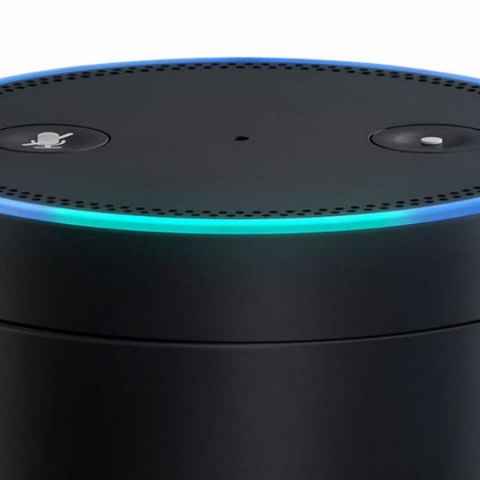

- Amazon voice recognition software adrino how to#
- Amazon voice recognition software adrino code#
- Amazon voice recognition software adrino plus#
Amazon voice recognition software adrino plus#
Search eBay for a "MAX9814" module - mine cost £1.55 plus postage.

Amazon voice recognition software adrino how to#
I'm assume you already know how to program an Arduino - if not there are lots of Instructables tutorials. I chose the MAX9814 microphone amplifier as it has automatic gain control. It's not something that you can just build and it will work first time.įor this project, you will need an Arduino Nano (or Uno or Mini or similar so long as it uses a 16MHz ATmega328), a microphone and an amplifier for the microphone. It's something for you to work on and improve.
Amazon voice recognition software adrino code#
Maybe you can improve my code and do better. Under ideal conditions I was getting 90% to 95% correct recognition which is roughly what people were getting in the 1970s. Then you could add speech output using, for instance, the Talkie library.ĭid it work? Well, more or less. If you search Instructables for "Alexa" or "Siri", you'll find around 200 projects - many of them could benefit from not requiring an internet connection. Or what about a remote-control robot? An MP3 player while jogging? There are lots of places where a dozen command words could be useful. Any sort of hands-free display could benefit from simple voice commands.

What use is that? Perhaps you want a head-mounted multimeter or a tiny ear-mounted mobile phone with no screen or keyboard. At the other end of the scale is a single speaker saying single words from a small vocabulary. The hard problem of speech recognition is continuous speech by any person using a huge vocabulary. Clearly, a Nano isn't going to be as good as those. So a Nano is in the right ballpark for simple speech recognition but why bother? Other speech recognition projects exist but either require a web connection and that you send all your private conversations to Amazon or Google or they require a larger computer like a Raspberry Pi. Another group had re-purposed a Univac missile fire control system running at 1MIPS.

One group had a huge IBM-360 with 128kB but under 1MIPS. The sort of minicomputer people were using back then ran at 0.5 to 8 MIPS and had, say, 2K to 32K of memory split between program and data. How does a Nano compare with back then? A Nano has 2KB RAM, 32KB program ROM and runs at about 10 MIPS (depending on the instruction mix). Could an Arduino Nano do the same as a computer from that era? In fact, their plan is to create an Instructable and possibly a home kit solution.I was desperate for something to read during lockdown and found in my bookcase an IEEE report on Speech Recognition from the late 1970s. It is not clear why but one possible cause could be the Hub’s necessity to wait for a timeout as it is not able to send data to the cloud.Īudeme will present the system at this week’s Maker Faire in San Mateo, CA (May 19th – 21st) and they are happy to let you play around with it. The delay between the actual light switch and MOVI’s response is introduced by the Hue hub. Both voice commands and responses are fully customizable and MOVI can also speak and understand Spanish and German. It is powered here by a 9V block battery and a small 8ohm speaker for acoustic responses. The system works by connecting to the Hue hub via WiFi. Here is a short video of the experimental system: It also allows for better control and customization of the light bulb configuration compared to using Alexa or Google Home. The combination of the Arduino-compatible chipKIT Wi-FIRE board and Audeme’s MOVI speech recognition shield lets users voice-control their Philips Hue bulbs without leaking private information into the cloud (i.e., voice recordings to Amazon or Google, Philips Hue hub data to Salesforce and other data brokers).


 0 kommentar(er)
0 kommentar(er)
